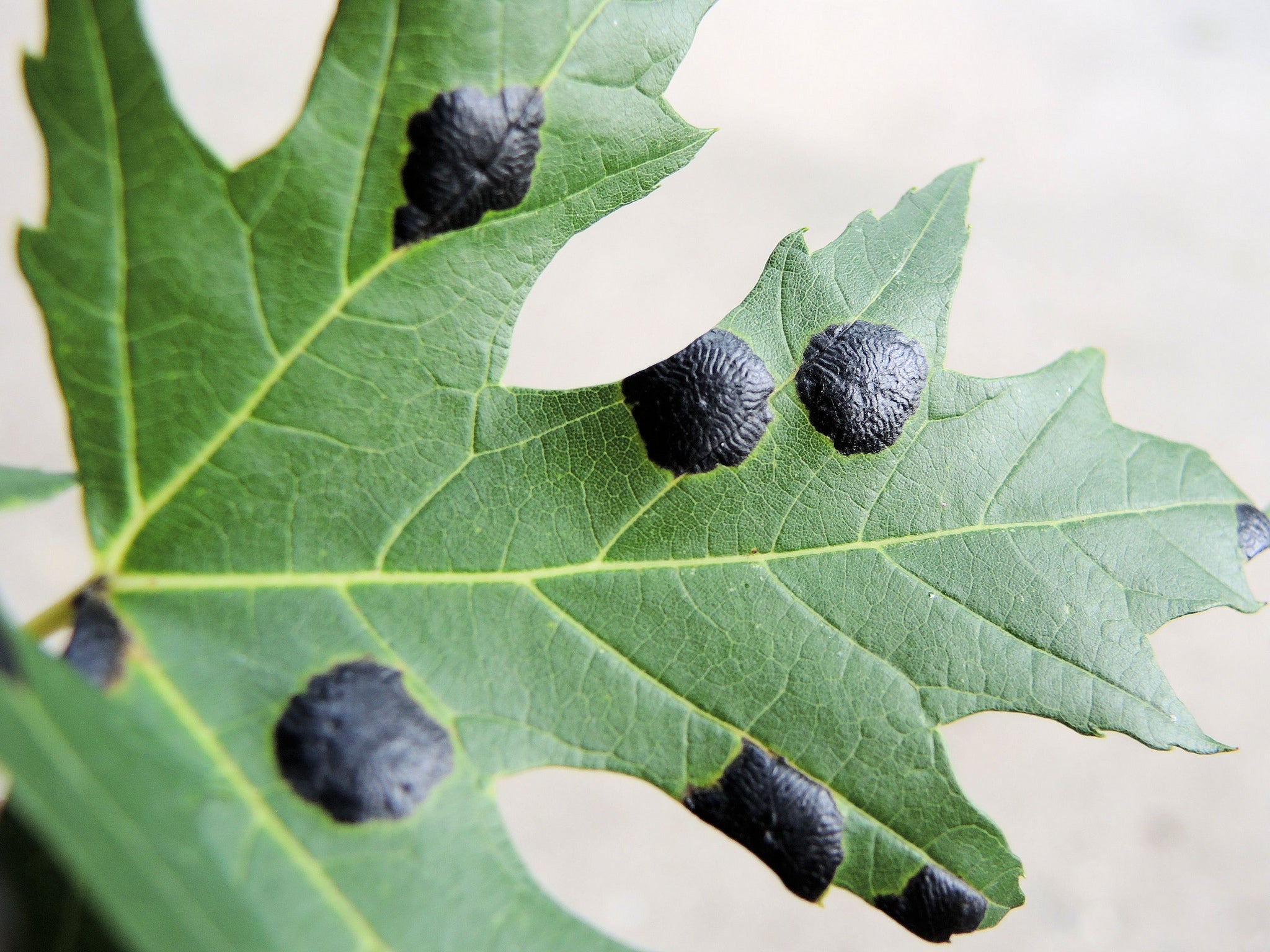Identifying and controlling plant disease now can help keep your plants and trees healthy over the winter. Our plant disease expert talks about different diseases, fall clean up and pruning. He also answers listener questions.
Featured in this Show
-
Wet Weather Increases Tar Spot Disease On Maple Trees
Have you noticed black splotches on the leaves of your maple tree this year? You’re not alone. It’s been a particularly good year for the disease, called tar spot, because of all the rain that has fallen in Wisconsin, said Brian Hudelson, director of the Plant Disease Diagnostics Clinic at the University of Wisconsin–Madison and plant pathologist at UW-Extension.
“Normally I see one or two spots per leaf, this year there were probably 10 or 15, and it was bad enough that towards the end of the season it was causing some leaf collapse, and we were getting early defoliation of the trees,” Hudelson said.
Even in those serious cases, it appeared so late in the season that it won’t have an overall impact on the health of tree, Hudelson said
Landowners needn’t be concerned. The spotted leaves don’t look the best, but there is little chance it will endanger the tree.
“Amongst the diseases you can have on a maple tree, it’s relatively minor,” said Hudelson. “It’s not going to kill your tree, it’s primarily a cosmetic problem.”
Tar spot is very difficult to eradicate because it infects very readily. Hudelson said it’s important to get rid of as much of the infected leaves as possible. Burning is the best way dispose of the material, but burying it and making sure it’s covered with a layer of soil will work.
As will composting, as long as the compost pile gets up to 140 degrees, which is hot enough to kill the disease.
Hudelson also suggested strategic pruning to open up the tree’s canopy.
“This disease does better, as do most foliar diseases, when leaves get wet and stay wet for a period of time,” he said. “Anything you can do to improve airflow and promote more rapid drying of the leaves is going to help prevent the disease.”
Hudelson warned against mulching the leaves because they will not decay enough over the winter to kill tar spot. Because the disease doesn’t really hurt the tree, chemical sprays are unnecessary and a waste of time and money, he said.
Hudelson said tar spot is in the state to stay and the severity, on a year-to-year basis, will correspond with the amount of rain received.
Episode Credits
- Larry Meiller Host
- Jill Nadeau Producer
- Brian Hudelson Guest
Wisconsin Public Radio, © Copyright 2026, Board of Regents of the University of Wisconsin System and Wisconsin Educational Communications Board.
